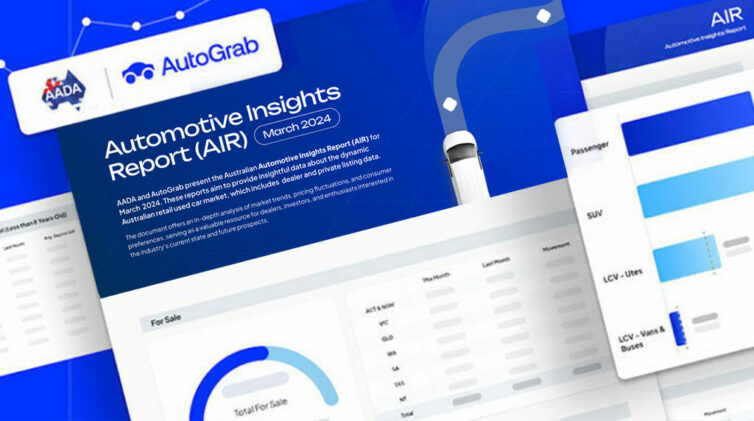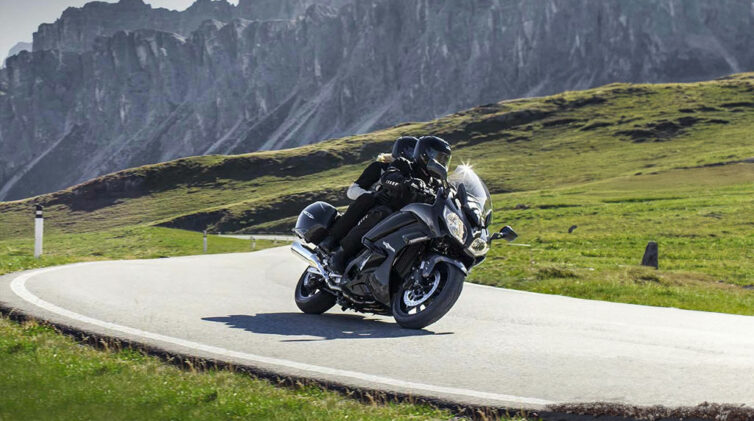In total, Mercedes racked up 42,489 new registrations in 2017 (including 5421 light-commercial vehicles) – up 4.2 per cent on the previous year – while its passenger car and SUV result marked a 3.1 per cent increase.
Such a positive performance was a rare sight among the premium car-makers, with most brands experiencing a sales decline including Audi (-9.3%), BMW (-15.7%), Infiniti (-3.8%), Jaguar (-17.5%), Land Rover (-3.6%), Lexus (-2.5%), Mini (-1.4%) and Volvo (-20.4%).
Bucking the trend were Alfa Romeo (+48.7 per cent), Porsche (+1.1%) and Maserati (+53.2%).
Mercedes’ most popular model was the C-Class with 8549 sales last year, a substantial 25.4 per cent lift over the previous year to remain the dominant force in the premium mid-size passenger car segment, where the model finished with a 38.2 per cent share.
So popular was the C-Class that it outsold the combined totals of its next three closest rivals – the BMW 3 Series (2584), Audi’s A4 (2177) and the Lexus IS (1524) – each of which faced a sales downturn of 35.0, 26.5 and 4.4 per cent respectively.
Combined with the segment-sharing CLA stablemate that sold 3445 units, Mercedes-badged vehicles accounted for more than half (53.6%) of all sales in the class.
Mercedes also dominated with its E-Class luxury sedan and soon-to-be-replaced CLS combining to account for 46.4 per cent of the premium large car segment with 1896 (+49.2%) and 182 (-42.9%) new registrations apiece.
However, BMW’s new-generation 5 Series managed to put up a fight with 1245 units sold in 2017, a 128.4 per cent lift, while the ageing Audi A6 and A7 combined for 394 sales (-42.2%).
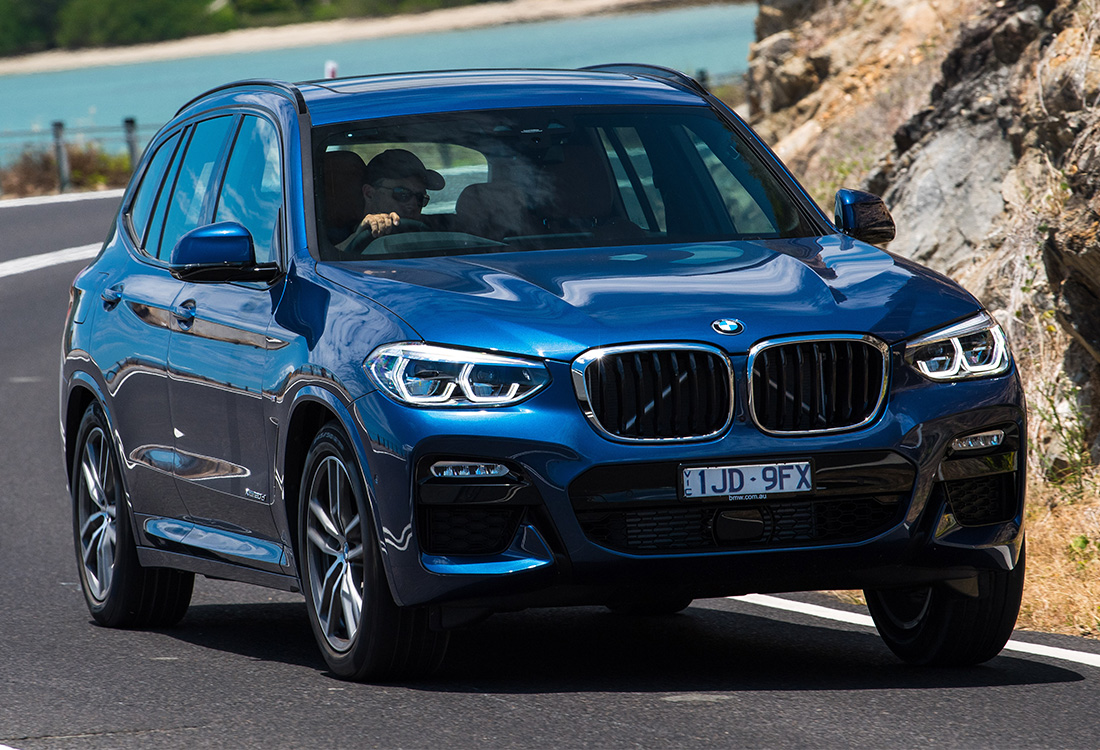
Dominant force: Mercedes-Benz sold 8549 examples of the C-Class last year, which is miles ahead of its rivals in the premium mid-size segment.
The premium sportscar market also saw Mercedes snag the sales crown thanks to the combined total of its C-Class and E-Class Coupe/Convertible, and the rebranded SLC drop-top, which collectively made up 54.4 per cent of the segment.
The C-Class two-door and convertible found 2818 homes (+41.2%), the larger E-Class Coupe/Convertible sibling accounted for 688 sales (-0.4%) and the SLC rose 174.5 per cent with 291 new registrations.
BMW had a strong showing with 1057 sales of its 4 Series coupe and convertible (-31.9%), while the Z4 sold just 87 units (-55.2%) in what is expected to be its final year on sale before being replaced with a new-generation model.
Audi sales lifted in the segment thanks to its new-generation A5, increasing by 60 per cent to 600 units, although the TT fell 53.8 per cent to 252.
Notably, Porsche’s Boxster and Cayman twins suffered a sales downturn, slipping 23.3 and 22.5 per cent to 132 and 221 units respectively.
It was a different story in the premium upper-large segment, with BMW clenching the title of most-popular model with its 7 Series flagship sedan, recording 164 (-44%) new registrations to keep the Mercedes-Benz S-Class at bay on 113 sales (-63.8%).
Porsche’s new-generation Panamera experienced a 164.3 per cent lift to 111 units, while Audi’s outgoing third-generation A8 captured 35 sales (-37.5%).
In the premium light-car segment, the Mini hatch finished the year on top with 2135 sales – a 12.1 per cent drop over its 2016 total – to account for 48.7 per cent of the market.
Sales of the Audi A1 slid 36.8 per cent from 2113 in 2016 to 1336 last year, while the Mini Clubman also contributed 453 sales (-11.9%) to the BMW-owned brand’s overall tally.
Meanwhile, the premium small-car market was led by Audi’s A3 with 5117 new registrations (-16.9%), edging out the Mercedes A-Class hatchback on 4768 (+10%) and BMW 1 Series with 2105 (-18%).
Overall Mercedes-Benz sold 24,394 passenger car units compared with Audi’s 11,141 and BMW’s 10,747, however in a sign of the times, the sales race between the big three German brands was much closer with SUVs.
In total, BMW sold more SUVs with 12,872 sales, narrowly beating Mercedes-Benz (12,674) and Audi (10,870).
The premium small SUV class was a close race with BMW’s X1 taking honours with 3658 units, outpacing the Mercedes-Benz GLA (3321), Mini Countryman (767) and Audi Q3 (2843).
However, combining Audi’s Q3 sales with its new-in-2017 Q2 (1999) brings the Ingolstadt brand’s market share to 37.7 per cent – enough to be the most popular car-maker in class.
Benz also performed strongly in the mid-size SUV segment with the combined GLC and GLC Coupe pair accounting for 5172 sales, split 4109 and 1063 respectively, but was fiercely contested by BMW’s X3 and X4 pair that fell short of Mercedes’ total by just one unit on 5171 (3671 and 1500 respectively).
However, it was Land Rover that took honours in the segment with its Discovery Sport accruing 4547 new registrations, followed by the Lexus NX (3390) and Audi Q5 (3364).
The premium large SUV class saw BMW finish the year on top with 3582 sales of its X5 and the mechanically related X6 adding 461 units to the brand’s bottom line.
Land Rover’s Range Rover Sport was the next most popular model on 2983 sales, followed by the Audi Q7 (2664), and Mercedes-Benz GLE (2257) and GLE Coupe (724).
By Tung Nguyen


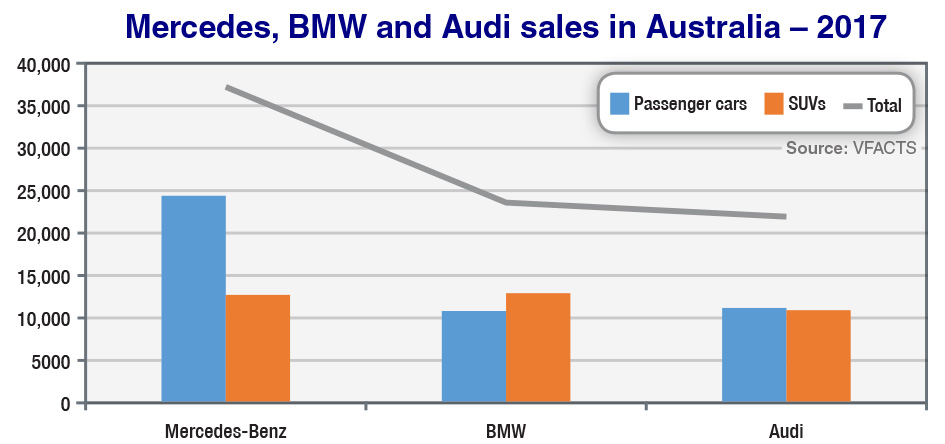
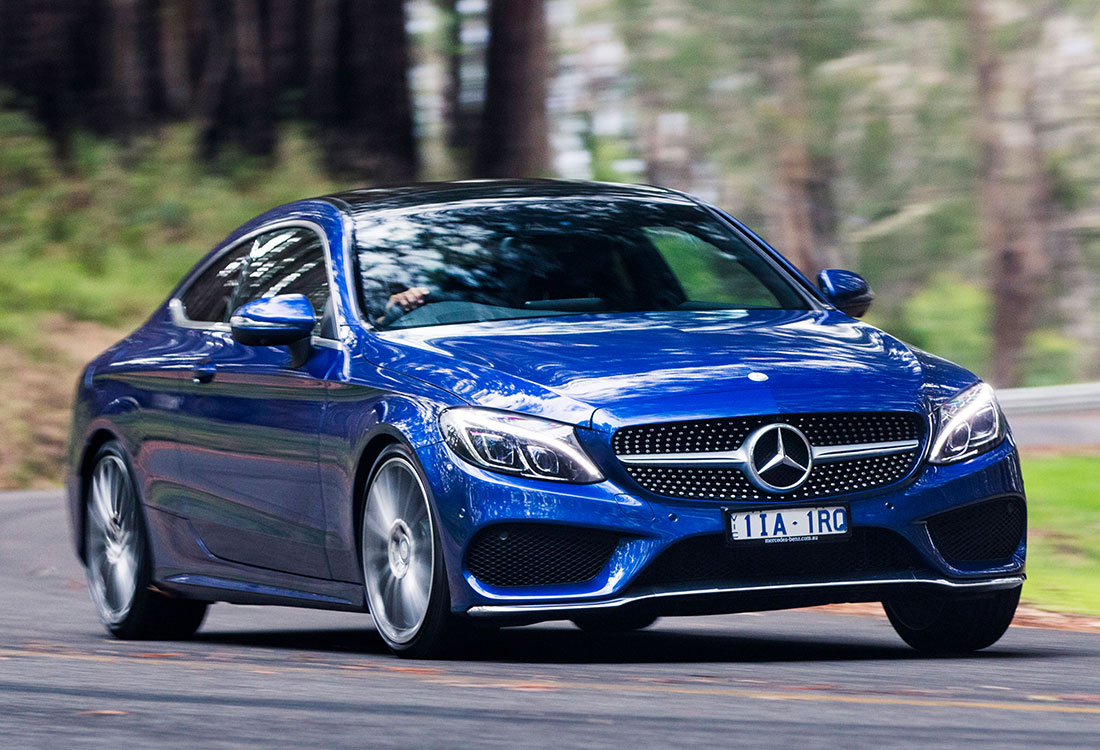
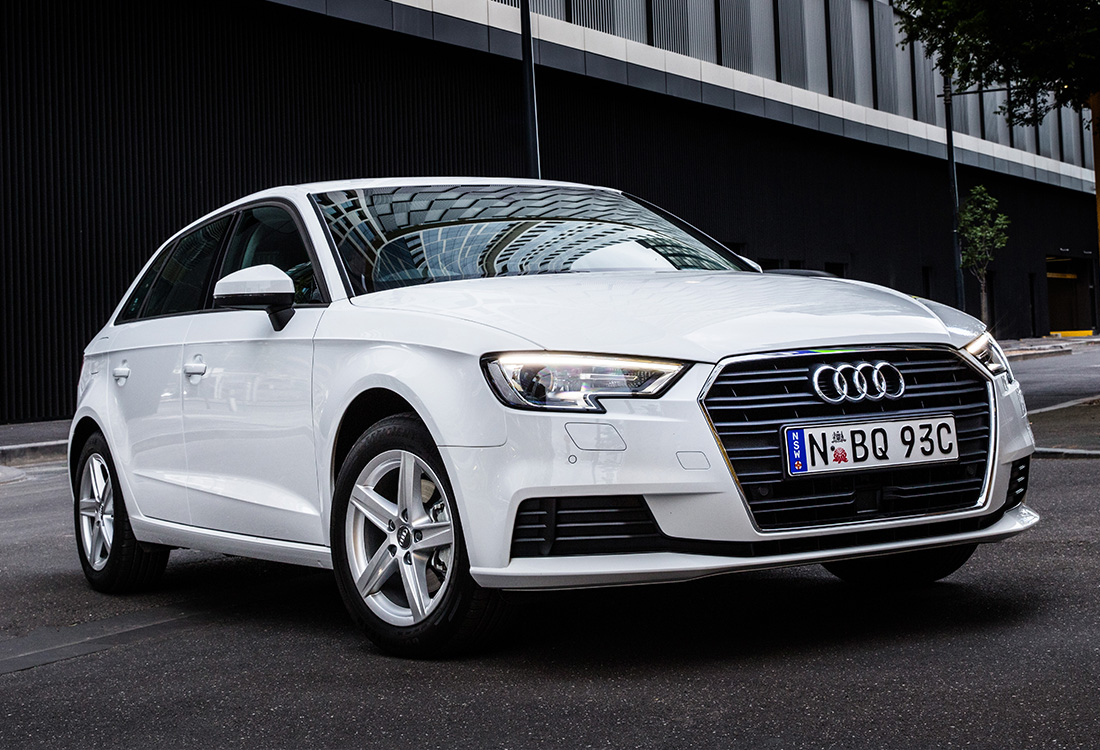










 Read More: Related articles
Read More: Related articles
